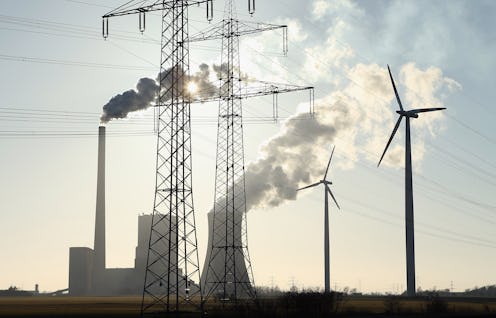News
California's Cap & Trade Energy Policy Was Just Extended To 2030

President Trump has made it clear that the United States will be leaving the Paris climate accord, and thus green is likely not to be the main color associated with this administration (unless of course, it's a comment on money and the rich). But fear not for the world's future, or at least fear a bit less, because California is paving the way to a climate policy that takes Mother Earth into consideration and works to reverse the effects of climate change. What is the cap and trade energy policy? California's legislature voted to extend the state's greenhouse gas policies.
Back in 2006 when Arnold Schwarzenegger was governor, the state passed its first cap and trade system with the goal of reducing carbon levels to what the state emitted in 1990 by the year 2020. The way it works is that polluters must pay to emit carbon, and businesses can buy more permits or trade them to reduce their emissions, allowing the market to decide the best, most efficient ways to reduce the amount of greenhouse gases released into the atmosphere.
One of the big problems with the initial scheme was that it expired in 2020, and for climate change to be reduced, more work will need to be done to reduce emissions even further. Now the state has a new goal of emissions being 40 percent lower than 1990s levels by 2030, and the bill approved Monday by the state senate extends the scheme through that date.
A few improvements were also added including limits on the number of free credits and additional regulations for factories, Reuters reported. The amount of greenhouse gas that must be decreased between 2020 and 2030 is significant. The current level of emissions is about 440 million metric tons. The goal for 2020 is 431 million, whereas 2030's target is 260 million — a much bigger decrease.
Opponents of the bill say that it could lead to much higher costs for consumers, a tough ask for lower and middle class Californians. Gas prices, for example, could rise up by 73 cents by 2031 due to the program. The California Air Resources Board, however, told the senate committee on appropriations that the bill would save the average family about $200 per year when fully implemented, much of it coming from potential savings in electricity costs.
California Gov. Jerry Brown was pleased with the bill, a bipartisan one that received one Republican vote in the state senate. "Tonight, California stood tall and once again, boldly confronted the existential threat of our time. That's what good government looks like," Brown said in a statement Monday night.
Given the lack of leadership in D.C. on the matter, Brown and California's example is more than welcome.